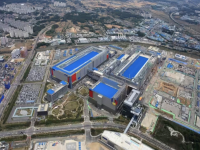In addition to Weibo, there is also WeChat
Please pay attention

WeChat public account
Shulou


2025-12-18 Update From: SLTechnology News&Howtos shulou NAV: SLTechnology News&Howtos > IT Information >
Share
Shulou(Shulou.com)11/24 Report--
CTOnews.com, May 3 (Xinhua)-- NASA researchers recently conducted an experiment in a vacuum that successfully separated oxygen from simulated lunar soil using a laser and a special reactor. This technology is of great significance for NASA's Artemis Project (Artemis program) and could provide a sustainable source of oxygen for the future establishment of long-term settlements on the moon.
The experiment was carried out by the NASA Johnson Space Center (JSC) carbothermal reduction demonstration (CaRD) team, who used JSC's "Dirty" vacuum chamber to simulate lunar conditions. In this spherical vacuum chamber 15 feet in diameter, the researchers used a high-power laser to simulate concentrated sunlight, heating and melting the simulated lunar soil (regolith), the powdered lunar soil. This process is called carbothermal reduction. This method has been done before, but not in a vacuum.
Thanks to a new carbothermal reactor developed by Siera Space (Sierra Space) for NASA, researchers were able to maintain constant pressure inside the reactor during vacuum chamber tests to prevent gas escape, while allowing consumed lunar soil material to enter and exit the reaction area. During the melting process, a mass spectrometer (MSolo), which watches the moon's movements, detected the release of carbon monoxide from the lunar soil bombarded by lasers, from which oxygen can be further separated.
"this technology has the potential to generate several times its own weight of oxygen on the lunar surface each year, which will enable humans to continue to live and develop the economy on the moon," Aaron Paz, a senior engineer at NASA Johnson Space Center, said in a recent NASA statement.
"our team has proved that the CaRD reactor can operate on the lunar surface and extract oxygen successfully," said Anastasia Ford, an NASA engineer and director of CaRD testing. " This successful test brings the technology to level 6 on the NASA Technical Readiness Standard scale, which means that the technology is ready for practical use in space and meets the requirements of the NASA Artemis mission.
Artemis 3 will be the first mission to send astronauts to the surface of the moon in more than 50 years, and for subsequent missions, NASA plans to use long-term residence on the moon as a springboard to send humans to Mars.
Welcome to subscribe "Shulou Technology Information " to get latest news, interesting things and hot topics in the IT industry, and controls the hottest and latest Internet news, technology news and IT industry trends.
Views: 0
*The comments in the above article only represent the author's personal views and do not represent the views and positions of this website. If you have more insights, please feel free to contribute and share.

The market share of Chrome browser on the desktop has exceeded 70%, and users are complaining about

The world's first 2nm mobile chip: Samsung Exynos 2600 is ready for mass production.According to a r


A US federal judge has ruled that Google can keep its Chrome browser, but it will be prohibited from

Continue with the installation of the previous hadoop.First, install zookooper1. Decompress zookoope







About us Contact us Product review car news thenatureplanet
More Form oMedia: AutoTimes. Bestcoffee. SL News. Jarebook. Coffee Hunters. Sundaily. Modezone. NNB. Coffee. Game News. FrontStreet. GGAMEN
© 2024 shulou.com SLNews company. All rights reserved.